Since Cardinals are bright red, they are one of North America’s most beloved backyard birds. These stunning creatures can become regular visitors with the right approach to your outdoor space.
Provide black oil sunflower seeds, safflower, or cracked corn to attract cardinals to your yard. Place this variety in a platform or hopper feeder. Then, make a bird-friendly garden with dense shrubs for shelter and a reliable water source. These brilliant birds prefer yards that offer both food and protection, making them ideal year-round residents when their basic needs are met.
Your yard can transform into a cardinal sanctuary by creating the perfect blend of feeding stations and natural cover. Cardinals especially appreciate properties with evergreen trees, native berry-producing shrubs, and multiple feeding areas at different heights.
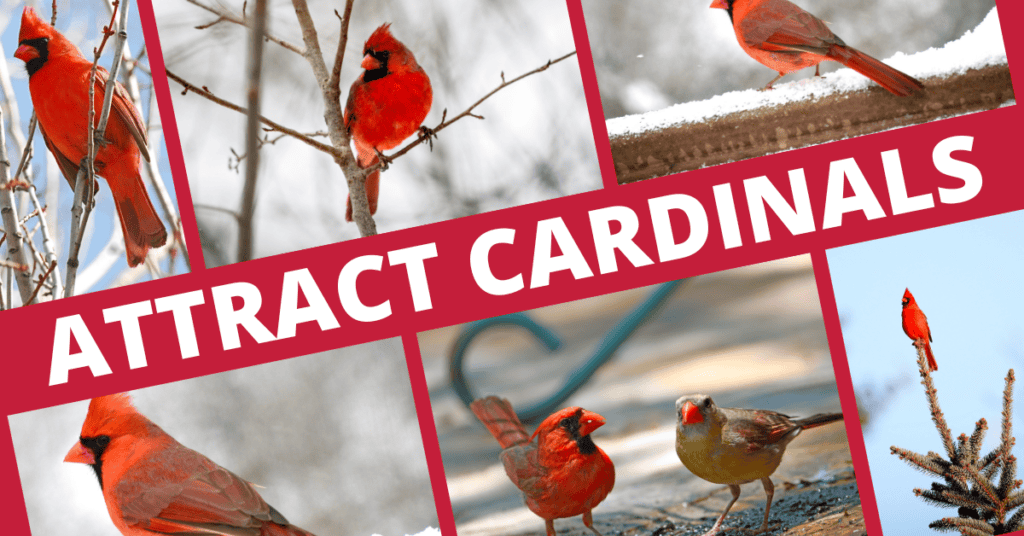
Key Takeaways
- Set up ground-level and elevated feeders filled with sunflower seeds to accommodate cardinal feeding preferences
- Plant dense shrubs and evergreen trees to create safe spaces for nesting and protection
- Install bird baths with fresh water year-round to provide essential hydration and bathing spots
Understanding Cardinal Behavior
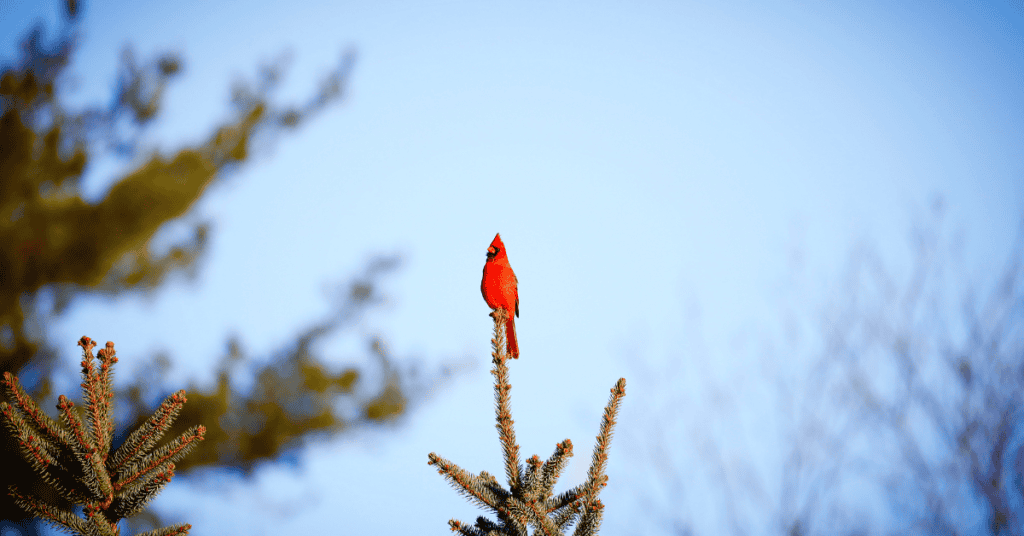
Cardinals follow predictable patterns in their daily activities and habitat preferences. Knowing their routines will help you attract them.
Natural Habitat and Diet
Cardinals thrive in areas with dense shrubs and low-hanging branches that provide protective cover from predators. Your yard becomes more appealing when you offer a mix of trees and bushes where they can quickly hide.
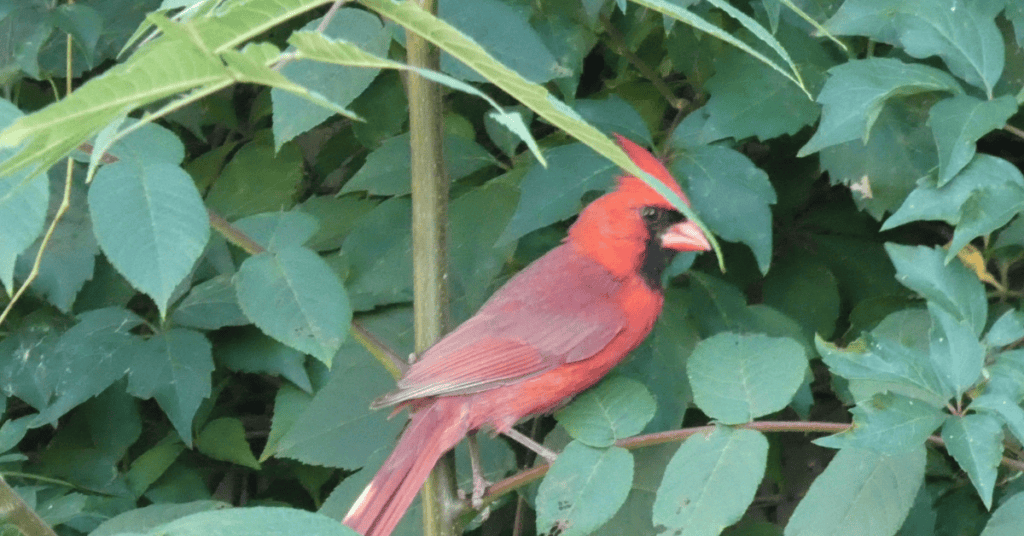
These cute red birds love eating sunflower seeds, safflower seeds and cracked corn. They’ll visit feeders regularly but prefer to eat from ground-level or platform feeders that mimic their natural feeding style.
So, with this in mind, if you scatter some seeds on the ground, you may get them to begin visiting your yard.
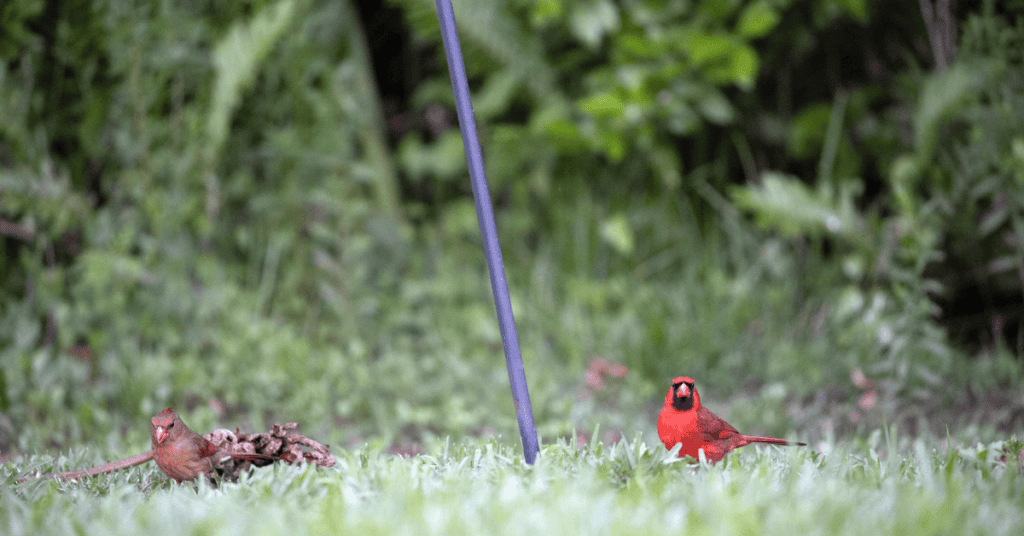
In nature, cardinals supplement their diet with insects during the spring and summer months. They also enjoy berries, especially during fall and winter when other food sources become scarce.
Daily Activity Patterns
Cardinals are early risers and often among the first birds at your feeders in the morning. Male cardinals are mainly active at dawn, singing from high perches to mark their territory.
These non-migratory birds stay in your area year-round, making them reliable backyard visitors every season. You’ll notice them feeding most actively during early morning and late afternoon hours.
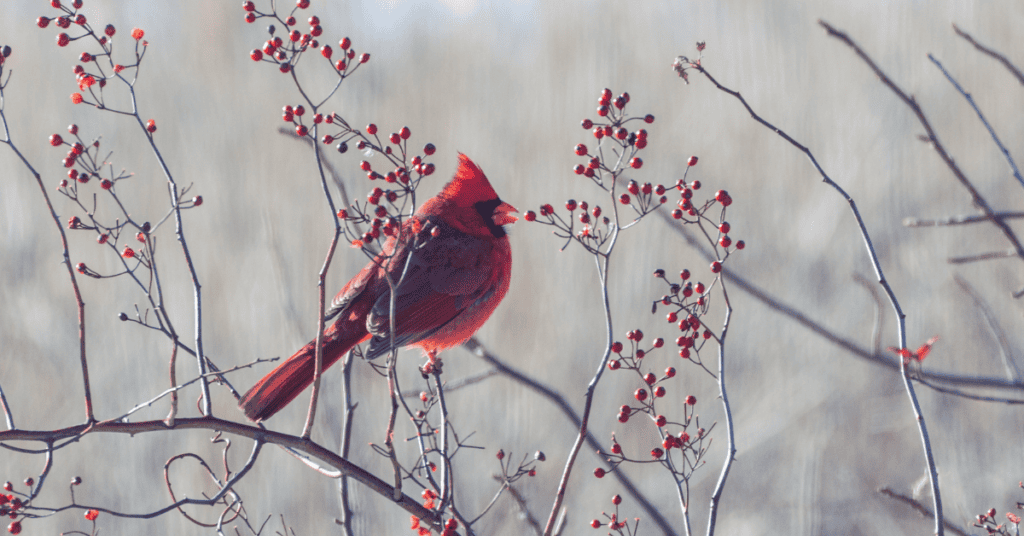
Cardinals typically travel in pairs or small family groups. They become more social in winter, sometimes forming flocks of 12-15 birds to feed together.
They prefer to feed in protected areas near shrubs or trees where they can quickly escape from hawks and other predators. Your feeding stations should be within 10-12 feet of protective cover.
Creating a Cardinal-Friendly Environment
Cardinals thrive in yards that offer a combination of reliable food sources, clean water, and safe spaces. A well-planned setup with the right feeders, food selection, and water features will transform your yard into a cardinal haven.
Appropriate Feeders and Placement
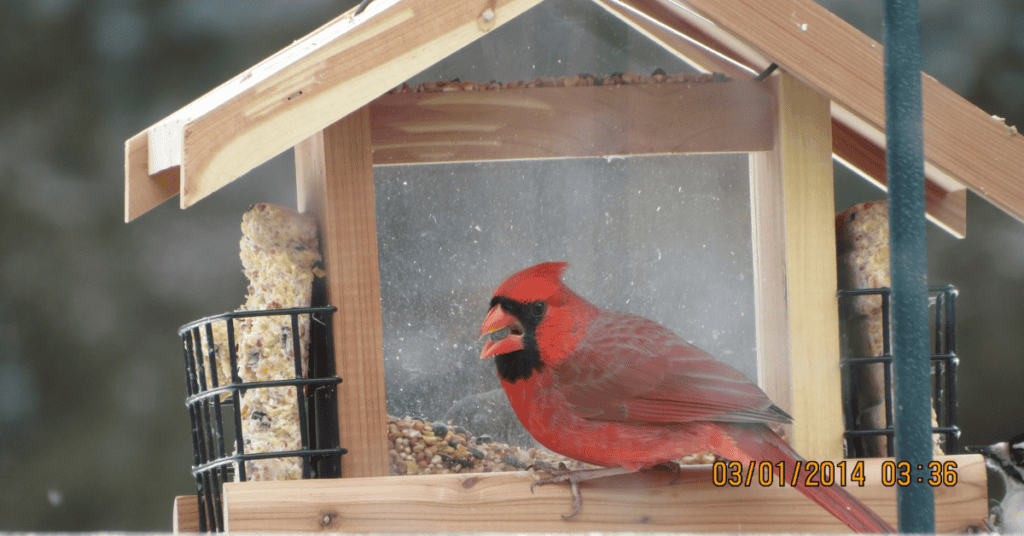
Platform and hopper-style feeders work best for cardinals due to their larger size and perching habits. Mount feeders 5-6 feet off the ground near protective brush or small trees.
Keep multiple feeding stations at least 10 feet apart to prevent territorial disputes between birds.
Choose squirrel-proof feeders with wide perches and covered feeding areas to protect the food from rain and snow.
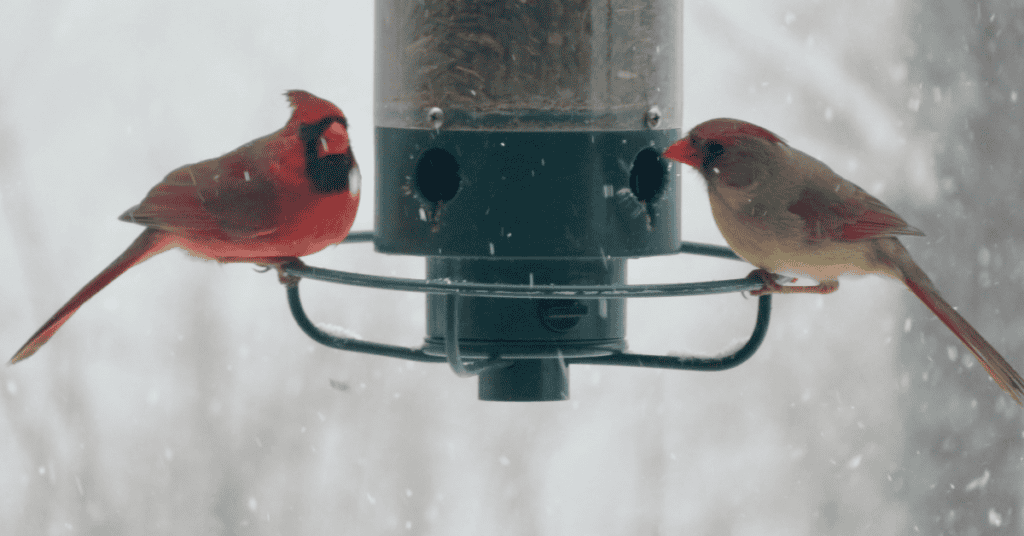
Place feeders within 10-12 feet of natural cover like thickets or evergreen shrubs. This gives cardinals quick escape routes from predators.
Optimal Food Selection
Black oil sunflower seeds are Cardinals’ favorite food. These seeds offer high energy content and are easier to crack than striped varieties.
Mix in safflower seeds to discourage squirrels while still attracting cardinals. Safflower seeds have a bitter taste that squirrels don’t enjoy.
Create a diverse menu with cracked corn and shelled peanuts. This variety ensures cardinals get complete nutrition throughout the year.
Store seeds in airtight containers. Plus you can even refridgerate some to prevent pests like grain beetles and to maintain freshness. Replace any food that becomes wet or moldy immediately.
Water Features and Maintenance
Install a birdbath 2-3 feet off the ground in a partially shaded area. The water depth should be 1-2 inches at the edges, sloping to 3 inches in the center.
Add a water wiggler or dripper to create moving water. The sound attracts cardinals and prevents mosquito breeding. Learn more about how to attract birds to a birdbath.
Use a heated birdbath during winter months. This provides crucial water access when natural sources freeze.
Clean your birdbath every 2-5 days with a mixture of nine parts water and one part vinegar. Scrub gently to remove algae and debris.
Empty and refill water daily during hot weather to ensure freshness.
Enhancing Natural Shelter and Nesting
Cardinals need safe spaces to rest, nest, and raise their young. Creating a welcoming environment with proper shelter and nesting options will encourage these beautiful birds to make your yard their home.
Cardinal Bird House
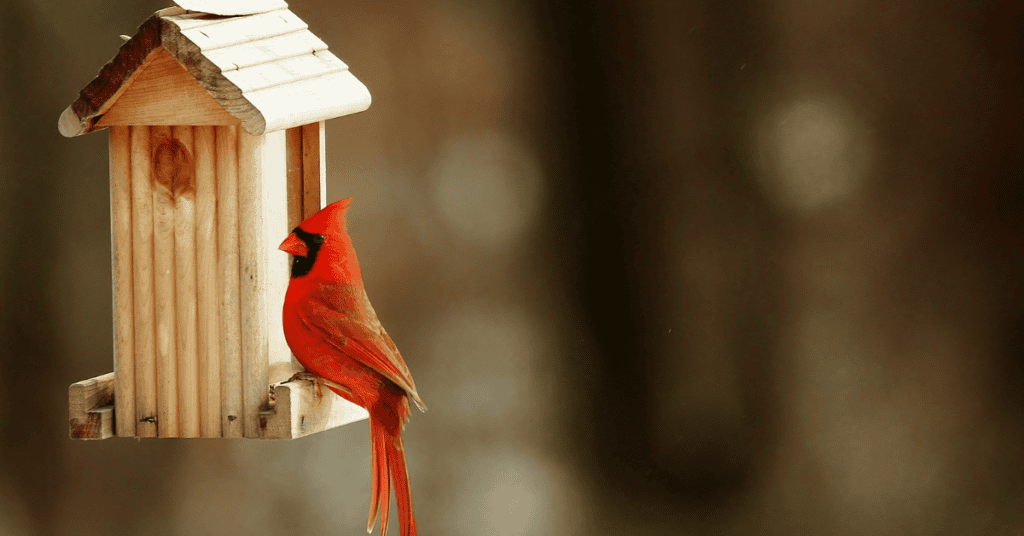
Cardinals prefer open-sided shelters rather than traditional enclosed birdhouses. Install platform-style nesting shelves 4-8 feet high in sheltered spots near shrubs or trees.
The platform should measure 6×8 inches with a small roof to protect it from rain. Please place it in a quiet area away from busy walkways and noise.
Clean the platform regularly to prevent mold and parasite buildup. Add a small lip around the edges to keep nesting materials from falling off.
Landscaping with Native Plants
Dense shrubs and small trees create ideal nesting spots for cardinals. Plant evergreen varieties like spruce or juniper to provide year-round shelter.
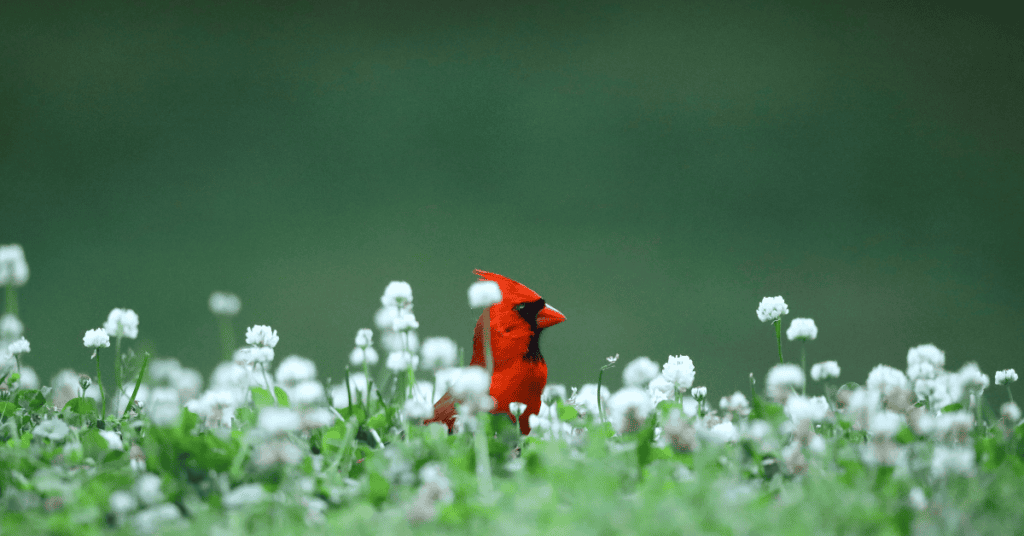
Recommended native plants for cardinal habitat:
- Eastern Red Cedar
- American Holly
- Virginia Creeper
- Black Cherry
- Flowering Dogwood
Place shrubs in clusters rather than single plantings. This creates protected corridors cardinals can use to move safely through your yard.
Providing Nesting Materials
Leave small piles of nesting materials in your yard during spring breeding season. Cardinals particularly appreciate:
- Small twigs (2-6 inches long)
- Pine needles
- Grass clippings
- Strips of bark
- Pet fur or wool yarn pieces (cut into 4-inch lengths)
Place materials in mesh bags or small platforms near feeding areas. Replace wet or moldy materials promptly.
Keep nesting material stations at least 3 feet off the ground to protect from predators.
Safety Measures for Cardinals
Creating a safe environment for cardinals requires attention to protection from predators, toxic materials, and potential hazards. Simple precautions will help keep your feathered friends healthy and return to your yard.
Predator Deterrence
Place bird feeders at least 10 feet away from bushes where cats might hide. Mount feeders on poles with baffles to prevent squirrels and raccoons from reaching them.
Consider adding dense thickets or thorny shrubs near feeding areas. These give cardinals quick escape routes and safe places to rest.
Install motion-activated sprinklers to discourage prowling cats and other ground predators.
Keep dogs on a leash or in fenced areas away from cardinal feeding spots during peak feeding times, usaully early morning and late afternoon.
Avoiding Harmful Substances
Remove old, moldy seeds from feeders weekly. Wet or spoiled food can make cardinals sick.
Skip chemical pesticides in your yard. Choose organic gardening methods to protect cardinals from toxic exposure.
Clean feeders monthly with a santizing solution, then rinse thoroughly and dry completely before refilling.
Store bird seed in sealed containers to prevent moisture and mold growth. Check regularly for signs of spoilage.
Minimizing Window Collisions
Place decals or bird tape on large windows, spacing the bird decals no more than 4 inches apart. Break up reflective surfaces that confuse birds.
Move feeders within 3 feet of windows or more than 30 feet away. This helps prevent fatal collision speeds.
Install external screens or netting 3 inches before windows during peak migration seasons.
Use UV window decals visible to birds but barely noticeable to humans. Replace them every 6-12 months as they fade.
Draw curtains or close blinds when possible, especially during bright daylight hours when reflections are strongest.
Additional Tips for Attracting Cardinals
Place multiple feeders around your yard to create different feeding zones. Cardinals feel more secure when they have options for dining spots.
Add a heated bird bath to provide fresh water during winter months. Cardinals need water year-round; a heated bath will attract them even in freezing temperatures.
Consider installing platform feeders or feeders with wide perches. Cardinals prefer stable surfaces while eating due to their larger size.
Cardinal-Friendly Plants to Add:
- Dogwood trees
- Serviceberry bushes
- Elderberry shrubs
- Sunflowers
Keep your feeding areas clean by removing old seed shells and droppings regularly. Clean feeders prevent disease and keep cardinals coming back.
Position your feeders near natural shelters like evergreen trees or dense shrubs. This gives cardinals quick escape routes from predators.
Best Times to Feed:
- Early morning
- Late afternoon
- Just before dusk
Try sprinkling some seeds on the ground. Cardinals often prefer feeding at ground level, especially in the early morning.
Make your yard a “bully-free zone” by choosing feeders that discourage larger aggressive birds, which will ultimately help cardinals feel safe while feeding.